Seafarers, particularly the bridge officers, always need to know the two most important information onboard a ship. The heading or the course, and position of the vessel. Sextant allows the mariners to measure the angle of a celestial body to the horizon.
That attitude of either the Sun or stars and the time it was taken would then be used to get a line of the position of their vessel. Sextant is also used to determine errors of the gyro and magnetic compass onboard.
What is a sextant used for?
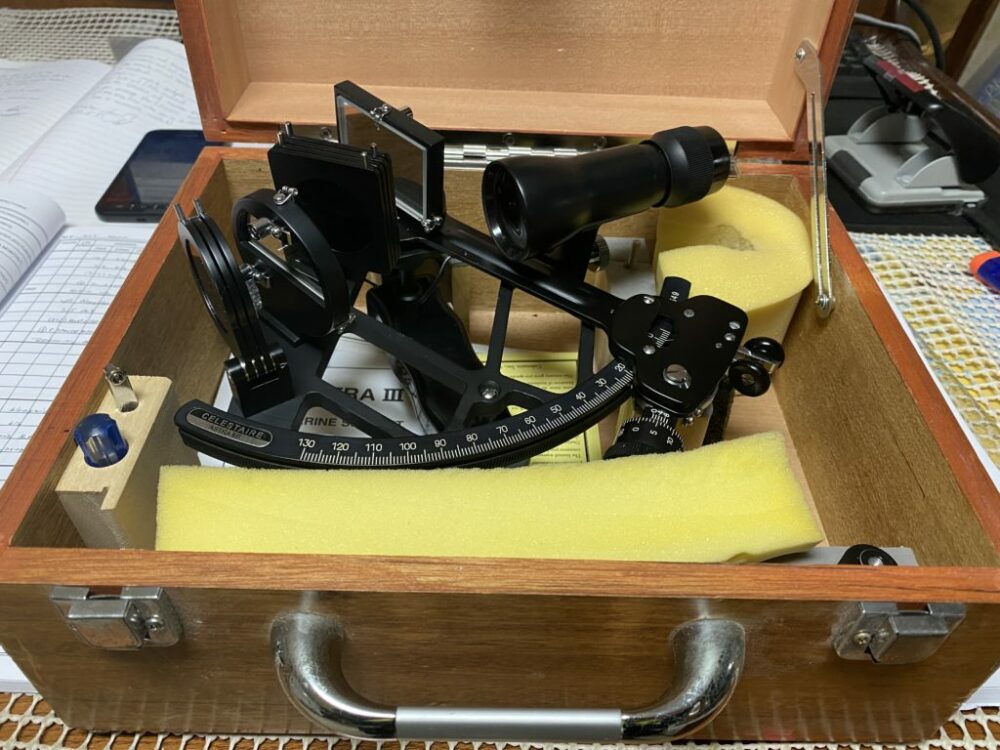
There are three ways you can navigate a ship. We have electronic, terrestrial, and celestial navigation. Navigators use sextants in celestial navigation wherein we make use of celestial bodies as reference points.
One would be able to determine the ship’s position simply by using a sextant, doing a simple calculation, and plotting on a map. However, there are times when the mariners won’t be able to use the sextant and that is one of the reasons why it has become obsolete over time.
The sextant needs good weather for it to be effective. When we are sighting the Sun, fairly good weather or partly cloudy skies would be ideal. This is even more challenging when we are sighting the stars during dusk or dawn when we need to have clear skies because of their size and brightness.
During rough weather or heavy seas, values taken from the sextant won’t be that accurate. Inaccurate reading leads to the position plotted will be far from the actual ship itself because of the movement of the vessel.
Sextant vs. Astrolabe – What’s the difference?
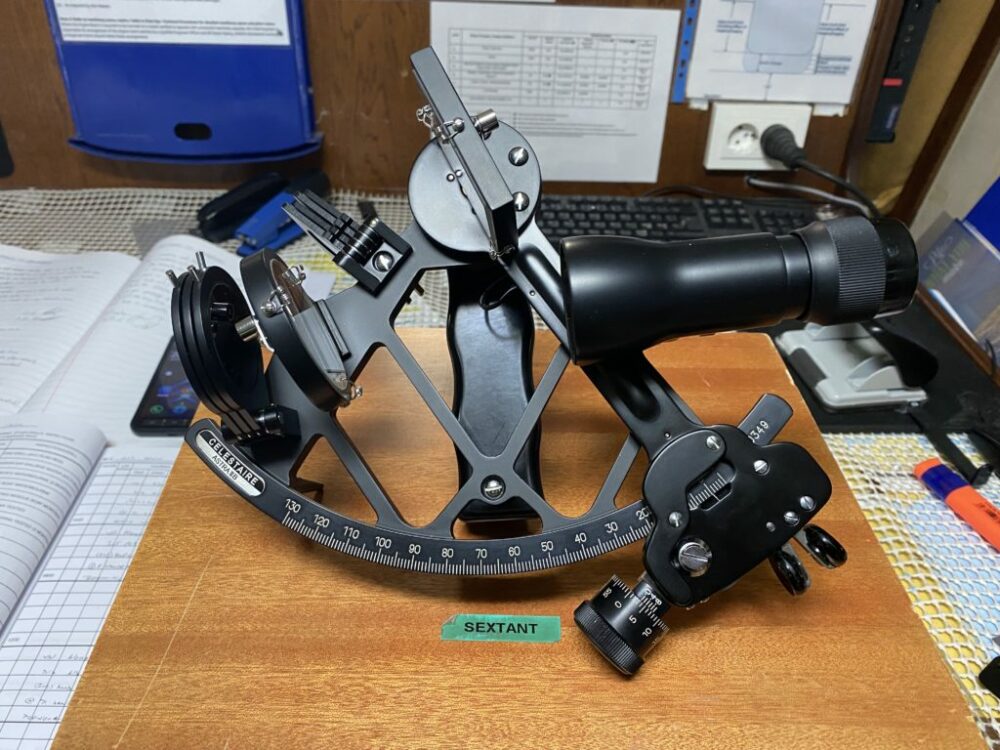
An astrolabe is a tool originally used by religious groups to know their prayer times. It was later adopted by early explorers to find the latitude based on the pole’s stars so they can sail either east or west.
Astrolabe was also used to find the height or elevation of a particular object. It works on the principle that provides the user with a plane image of the celestial sphere.
The sextant on the other hand was made specifically for navigation and is a more accurate instrument that allows the users to find both latitude and longitude. It works on a reflection principle and is easier to use compared to the astrolabe.
Both however will be difficult to use during heavy pitching and rolling of the vessel.
How does a sextant work?
Sextant measures the vertical sextant angle, horizontal sextant angle, and altitude of a celestial body by sighting it in the sky and bringing the object to the horizon.
Care is needed when using the sextant as it can damage your eyes by looking directly at the Sun. Make sure to use the three filters/shades on the horizon and index mirror before sighting the Sun. You can adjust the filters depending on the brightness of the Sun.
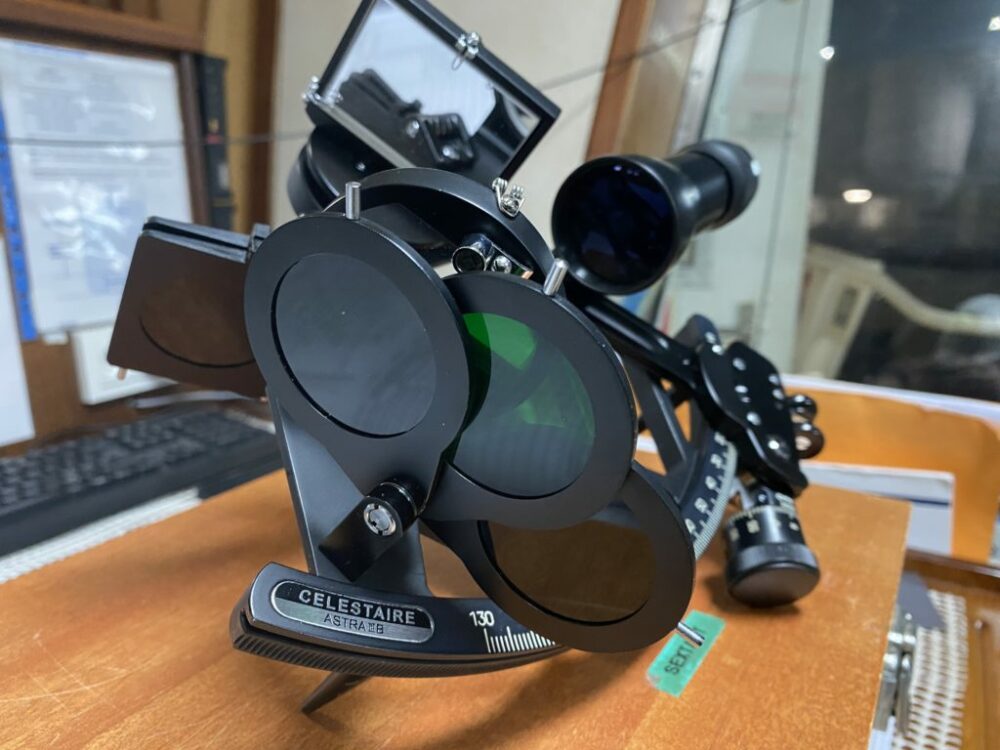
The sextant uses two mirrors, the index and horizon mirrors. It works on a principle called double reflection. This means that when a light is reflected from two mirrors, the angle created is twice the angle of the mirrors.
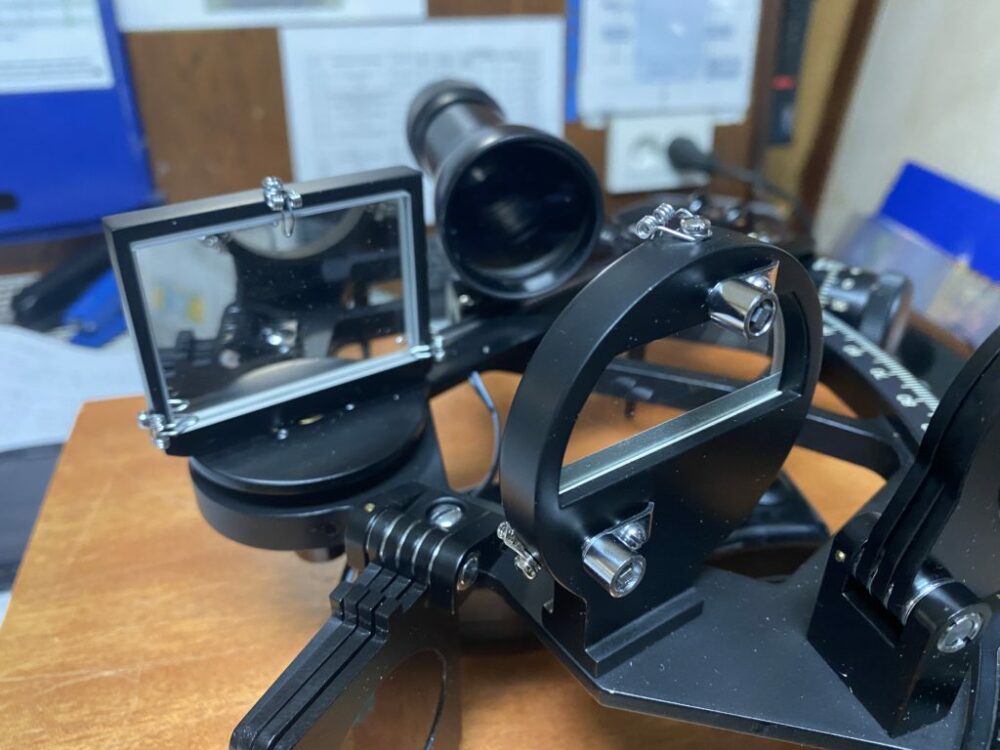
Take note that when the sextant is set to zero degrees, the glasses are parallel and there is no deflection in the ray of light. The reading that you get from your sextant must be in degrees, minutes, and seconds.
With the correct altitude and time, one can plot the ship’s line of position on a map or plotting sheet.
How to use a sextant?
Before using your sextant, make sure that it is calibrated and that errors are corrected. There are adjustable errors which include index, side, and error of perpendicularity. Non-adjustable errors include graduation, centering, shade, and optical errors.
Be familiar with parts of the sextant as it will help you during actual operation. The main parts include the index and horizon mirror, index arm, telescope, frame and index arm, graduated arc, micrometer drum, and clamp.
A key part that is normally hidden but beneficial, especially during night navigation is the lamp by the press of a button. If you are sighting the Sun, start by placing the horizon shades on the horizon and index mirror. This is to protect your eyes.
As your right hand is holding the sextant, place your left hand on the clamp that will allow you to move on the graduated arc. Then bring the Sun or the star to the horizon slowly and then read the value on the graduated arc.
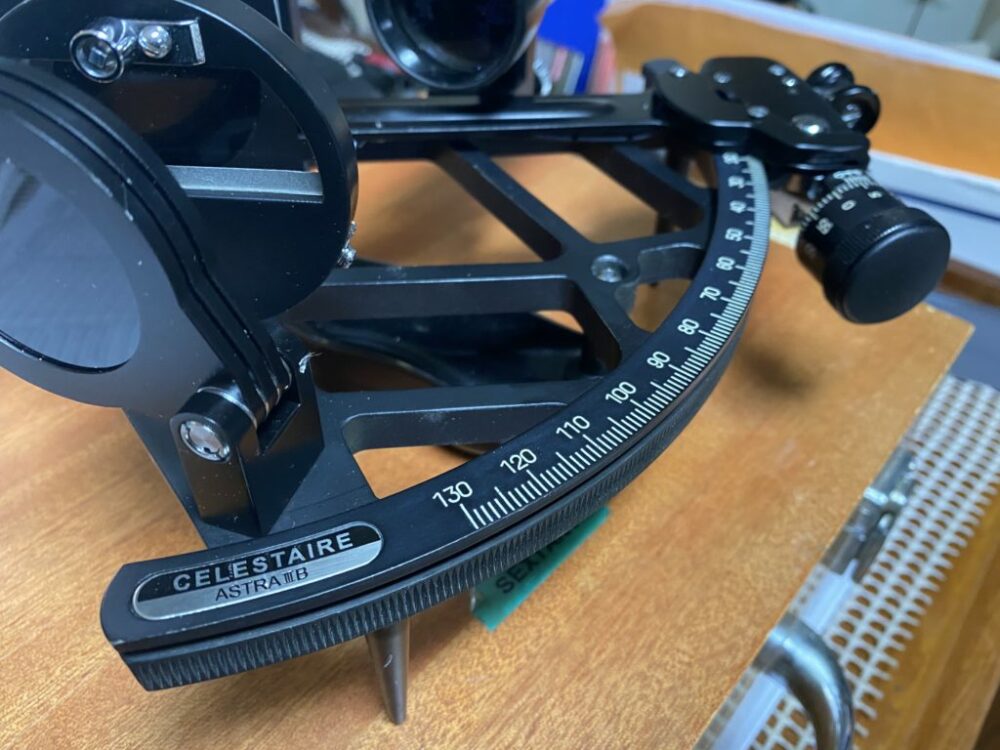
As the Sun or star nears the horizon, use the micrometer drum to adjust your sextant until it touches the horizon. Make sure to rock the celestial body on the horizon as if creating a semi-circle shape to get an accurate value.
Take note of the actual time by using a stopwatch when you have sighted the celestial body as this will be crucial during calculation and plotting your line of position. For the stars, greater skill is needed because of their size and limited light.
It is recommended to sight stars during twilight. Proper care and maintenance must be done to preserve the sextant. Make sure that the arc and rack are not damaged and that the mirrors and lenses should be wiped clean. Store it in its proper box to prevent it from bumping into other things.
Is a sextant still used today?
With the option of using terrestrial navigation and the ever development of electronic navigation, sextant has become just another tool onboard the ship. Terrestrial navigation makes use of the gyro compass to get bearings and distances.
The accuracy and availability of GPS information allow the mariners to monitor their position always. One downside of the sextant is that it takes time for the individual to get or plot his position on the map.
Right now, ships are equipped with ECDIS(Electronic Chart Display and Information System), ARPA radar, AIS, etc. for them to check and monitor the course and position of the vessel simply by watching it on the display screen.
The modern ship has become paperless when it comes to navigation. Hence the sextant is rarely or not even used today. It is however a great skill to teach the cadets and even young officers as it can be useful at the event that all electronic navigation fails.




Leave a Reply